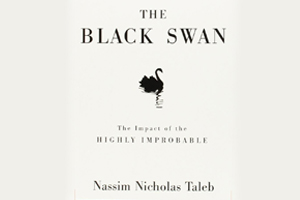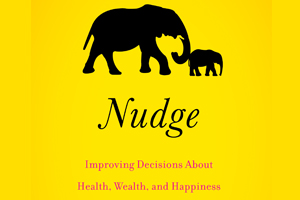One of the truisms of equity markets is, “what goes up, must come down”. Over a period of time, these movements become a part of a larger pattern and are often identified as cycles. In his book, “Mastering the Market Cycle - Getting the Odds on Your Side”, Howard Marks clearly articulates why being attentive to cycles is one of the most important things for an investor. He believes that while cycles may arise from external events, they are more inclined to be influenced by the ups and downs of human psychology and from the result of human behaviour. Written in a clear, lucid and engaging manner, the book provides invaluable insights into the concept of market cycles, their occurrence and how an investor can profit from them.
Key takeaways
- Cycles stem from extreme optimism and pessimism
- Cycles are an important part of markets – identifying cycles correctly can be highly profitable for investors
- Risk strongly influences the swing between extreme optimism and extreme pessimism
- Economic cycles are a reflection of the long-term trends in the economy
- Credit cycles feed the economic cycles as credit serves as oxygen for the economy
- By being perceptive to cycles and positioning your portfolio accordingly, you can stack the odds in your favour
- Have reasonable and achievable goals and focus on the long-term
The Nature & Importance of Cycles
We live in a world that is peppered by randomness and is strongly influenced by both, domestic as well as global, events. Add to that the behavioural biases of investors and we have a recipe for erratic movements. However, as you observe these movements over a period of time, you will see the emergence of a pattern that moves from excess to correction and then from correction to excess. One of the biggest contributors to the formation of cycles is investor behaviour. Investor psychology tends to move like a pendulum, swinging from extreme pessimism to extreme optimism. Consequently, most positive trends eventually are carried to excess, and those excesses eventually correct on their own or are corrected. Over a period of time, this becomes a cycle and the ability to reasonably identify the stages in the cycle can be very profitable for an investor.
‘Reversion towards the mean’ is a powerful and very reasonable expectation in most walks of life. Cycles tend to follow this universal rule of “reversion to mean” and oscillate around the midpoint even if they are intermittent cycles in a secular uptrend. The events in the life of a cycle shouldn’t be viewed merely as each being followed by the next, but – more importantly – as each causing the next. It is important to recognize the dependability of the cyclical patterns of extreme optimism and pessimism as two sides of the same coin. Even though the underlying dynamics are usually similar, the timing, duration, speed and power of the swings and most importantly ‘the reasons’ vary.
Cycles are:
- inevitable
- heightened by the inability of investors to remember the past
- self-correcting
- often viewed as less symmetrical than they are
Attitude towards Risk
When talking about investing, it is difficult to avoid the subject of risk. The basic essence of investing is bearing risk in pursuit of profit. Investors try to position portfolios so as to profit from future developments rather than be penalized by them. The superior investor is simply someone who does this better than others.
‘Risk’ is the main moving piece in investing. At any given point in time, the way investors collectively view risk influences market sentiment and shapes the trend. The greatest source of risk is the belief that there is no risk. Widespread risk tolerance – or a high degree of investor comfort with risk – is the greatest perpetuator of subsequent market declines.
How do typical market cycles unfold?
On the way up, as the economic fundamentals start to improve and the earnings increase and start to beat expectations, optimism starts seeping into the market. The media reports only good news, further fuelling this optimism. As a result, expectations rise, investor psychology strengthens, people perceive only favourable developments, capital becomes readily available, asset prices rise and investors embrace more risk. This pushes prices and risk to hit highs. However, at this point, people are highly euphoric and tend to throw caution to the wind. Which is why, when prices start declining, most investors are taken by surprise. On the way down, economic fundamentals start deteriorating, earnings decline and fall short of expectations. In this scenario, the media only reports bad news, thereby, further fuelling investor pessimism. As a result, expectations decline, investor psychology weakens, asset prices fall and investors become more risk averse. Prices finally hit bottom, where risk is low. This is the time to become aggressive. As investors start buying at the bottom, the cycle turns again and this moves in perpetuity.
Types of Cycles
The economic cycle
The economic or the business cycle provides the foundation for cyclical events in the business world or the markets. As the economy grows and gathers momentum, companies begin to perform well and see an expansion in their profits which subsequently results in a stock market rise. However, the focus must always be on ‘long-term economic trends’. Most of the cycles that attract investors’ attention consist of oscillations around a secular trend or central tendency. While those oscillations matter a great deal to companies and markets in the short run, changes in regard to the underlying trendline will prove to be of much greater significance. The oscillations around the trend will cancel out in the long run (after causing much elation and distress in individual years), but changes in the underlying trend will make the biggest difference in the long term.
The economic cycle can have a profound effect on some companies’ sales but less on others. This is primarily due to the differences in operating and financial leverage. This essentially means that a given percentage change in sales has a much greater impact on the profits of some companies than on the others. Sales are responsive to economic cycle in some industries (Industrial raw material, components etc.) and in some, they aren’t (everyday necessities like food and beverages). Also, some respond a lot, while others respond just a little. Understanding a company’s financial and operational leverage can help investors identify the best companies in each phase of the cycle.
However, extreme economic cyclicality is considered undesirable. Too much strength can stoke inflation and take the economy so high that a recession becomes inevitable. Too much weakness, on the other hand, can cause companies’ profits to fall and can cost people their jobs. This is where the government, central bankers and treasury officials play a role in managing the cycles.
The credit cycle
‘Credit’ is the lifeline of an economy. No economy can function without the availability of credit let alone flourish. Credit is like oxygen to an economy and one can imagine what happens when it dries up. It takes only a small fluctuation in the economy to produce a large fluctuation in the availability of credit, with great impact on asset prices and subsequently, the economy itself. Changes in the availability of capital or credit constitute one of the most fundamental influences on economies, companies and markets.
The Distressed Debt Cycle
The generalized hype and imprudence that is the hallmark of an upward cycle extreme more often than not engulfs the lenders of capital as well. When the credit market heats up, avid lenders start neglecting the best lending practices. They finance ‘less-deserving’ borrowers and accept weaker debt structures – many bonds that are issued lack the desired margin of safety, indicating that they won’t be able to be serviced if the general economic conditions worsen. This ‘unwise’ extension of credit can offer interesting investing opportunities.
A distressed debt investor tries to figure out:
- What the bankrupt company is worth (or will be worth at the time it emerges from bankruptcy)?
- How that value will be divided among the company’s creditors and other claimants,
- How long this process will take?
With correct answers to those questions, an investor can determine what the annual return will be on a piece of the company’s debt if purchased at a given price.
The Real Estate Cycle
Cycles are universal and apply to all asset classes. Real estate is a much-favoured asset class among investors as many people believe that it has myriad benefits, chief among them being its ability to serve as a hedge against inflation. What people eventually learn is that regardless of the merit behind these statements, they won’t protect an investment that was made at too high a price.
Putting it all together – Getting the Odds in your Favour
There are “the three stages of a bull market’’ that every investor must recognise. These are:
Stage 1: When only a few unusually perceptive people believe things will get better.
Stage 2: When most investors realize that improvement is actually taking place, and
Stage 3: when everyone concludes things will get better forever.
Identifying and understanding these stage can help investors position capital so as to benefit from the future developments i.e. have more invested when the market rises than when it falls, and own more of the assets that rise more or fall less, and less of the others.
For that, one needs to realise where the market stands in its cycle. Cycles do not stem completely – or sometimes at all – from the operation of mechanical, scientific or physical processes. They would be much more dependable and predictable if they did – but much less potentially profitable. Rather greatest profits come from seeing things better than others do, and if cycles were totally dependable and predictable, there would be no such thing as superiority in seeing them. The whole idea behind studying cycles is about how to position your portfolio for the possible outcomes that lie ahead.
Positioning and selection are the two main tools in portfolio management. The formula for investment success should be considered in three main pairs:
- Cycle positioning & Asset Selection
- Aggressiveness & Defensiveness
- Skill & Luck
How do you stack the odds in your favour?
- Start from reasonable expectations: in investing, it’s extremely easy to achieve average results and extremely difficult to consistently be above average. It’s important to decide whether you will:
- strive to be above average, which costs money and is far from sure to work, or
- accept average performance, avoiding those costs but being forced to look on as the winners occasionally report mouth-watering successes
- Make your goals explicit: every coherent investment program has to start from an explicit return goal and a defined time-frame
- Make sure that your goals are realistic and achievable: your goals should reflect and accommodate to the investment environment
- Formulate an opinion regarding cycle positioning: the goal in cycle positioning is to hold more of something when it’s cheap and less when it’s dear, and to increase aggressiveness and defensiveness at appropriate times. The key in this regard lies in the awareness of where the market stands, contrarianism, counter-cyclical behaviour and the pursuit of relative value
- Understand the essential nature of contrarianism: The investing herd is usually wrong at the extremes.
- Be fearful when others are greedy
- Be greedy when others are fearful
- Adopt a long-term focus: short term movements are just noise. The secular trend become evident only in the long-term. If you want to profit from identifying cycles, then you must adopt a long-term perspective.
While it is entirely reasonable to try to improve long-term investment results by altering positions on the basis of an understanding of the market cycle, it is also essential that one understands the limitations, as well as the skills that are required and how difficult it is.
The Cycle in Success
In investing, there’s a complex relationship between humanity and confidence.
“Success isn’t good for most people’’
It changes people and usually not for the better. Success makes people think they’re smart. Success also tends to make people richer, and that can lead to a reduction in their level of motivation. Everything that produces unusual profitability will attract incremental capital until it becomes overcrowded and fully institutionalized, at which point its prospective risk-adjusted return will move toward the mean (or worse).
The Future of Cycles
People will always gravitate towards “excesses”. While some people will learn from past cycles, there will always be repeat offenders and new comers who will once again indulge in “excesses”. Since cyclical deviations from the trendline are produced largely by excess and its eventual correction, cycles are always going to emerge. Economies and markets have never moved in a straight line in the past, and neither will they do so in the future.
Key Observations
A superior investor is the one who:
- is attentive to cycles
- has a better sense for what tickets are in the bowl, and thus for whether it’s worth participating in the lottery
- has above average insights about the future ‘tendencies’ that permits him to tilt the odds in his favour
An investor can most gainfully spend his time in three general areas:
- in trying to know more than others about what is ‘knowable’ such as fundamentals of industries, companies and securities
- being disciplined as to the appropriate price to pay for participation in those fundamentals
- Understanding the investment environment extant and deciding how to strategically position his/her portfolio.
An investor education initiative by Edelweiss Mutual Fund.
All Mutual Fund Investors have to go through a onetime KYC process. Investor should deal only with Registered Mutual Fund (RMF). For more info on KYC, RMF and procedure to lodge/redress any complaints – please visit onhttps://www.edelweissmf.com/kyc-norms
Mutual Fund Investments are subject to market risks, read all scheme related documents carefully.
Trending Books
MUTUAL FUND INVESTMENTS ARE SUBJECT TO MARKET RISKS, READ ALL SCHEME RELATED DOCUMENTS CAREFULLY.

















